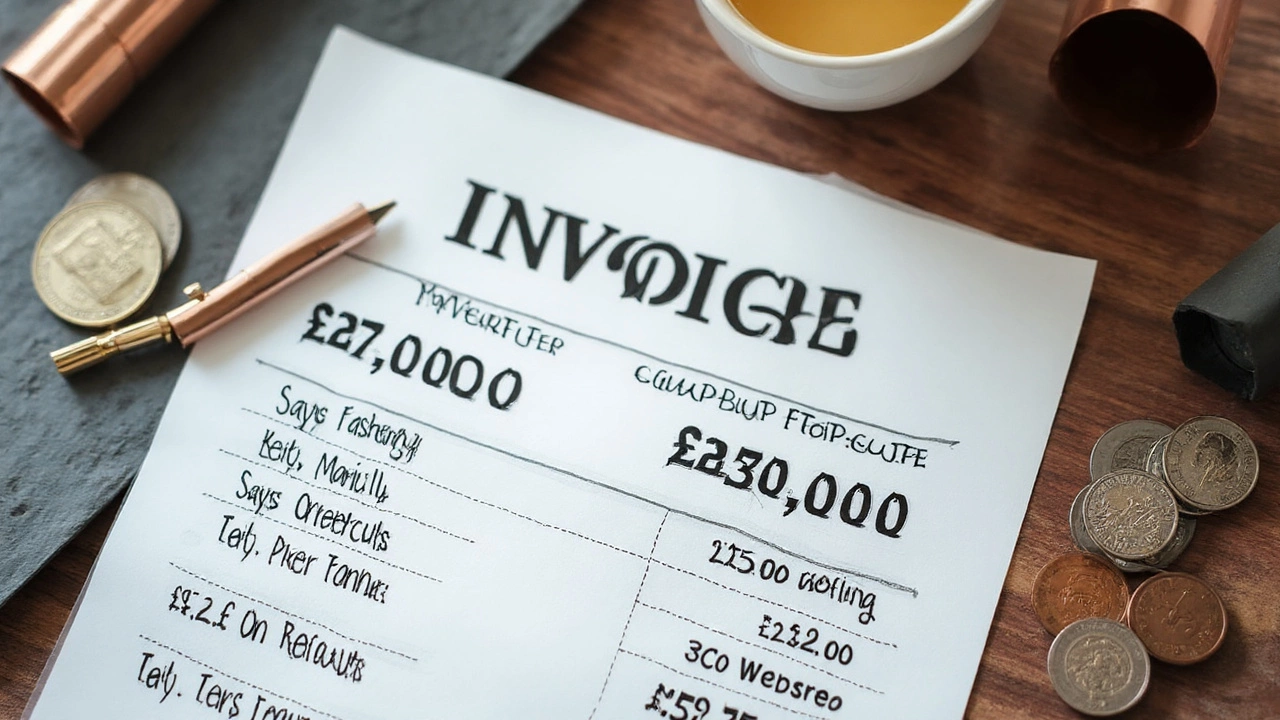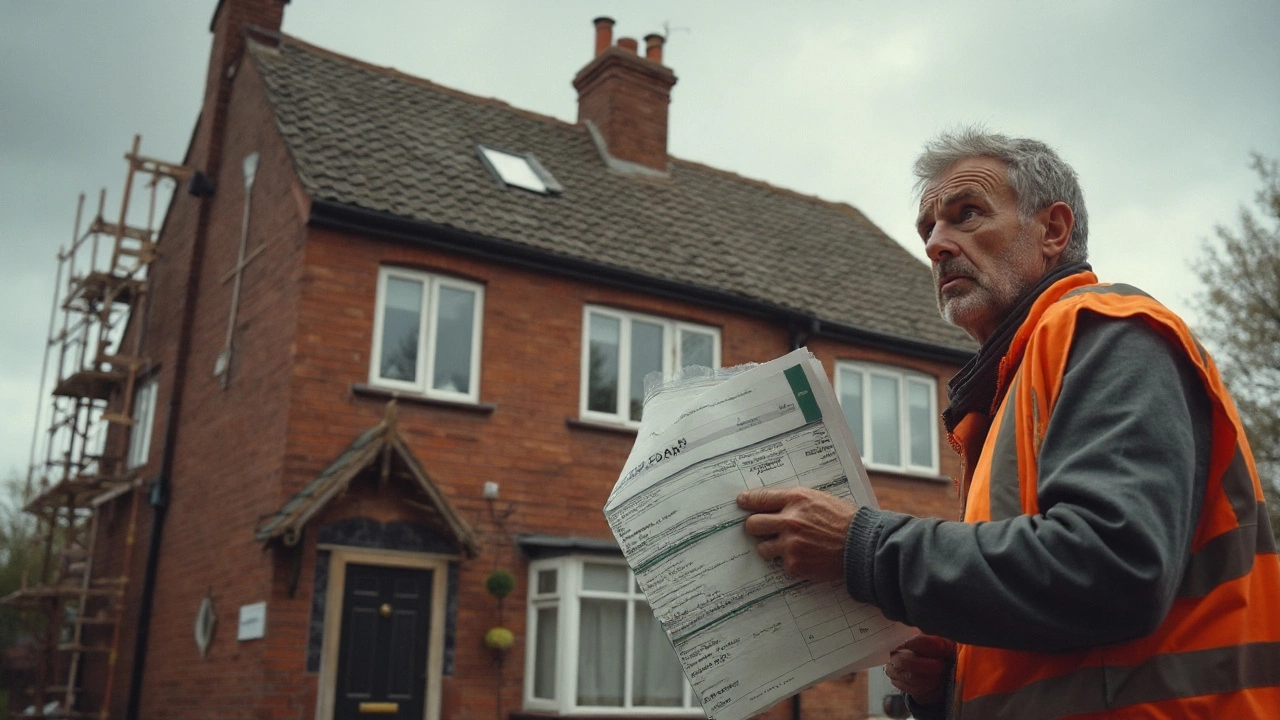Sticker shock is real. Picture signing off on $30,000 for your roof and then lying awake at night, wrestling with all those what-ifs. Why does something that literally sits over your head cost as much as a new car? Before even thinking about writing that huge check, let’s get into what’s actually driving those roofing costs, what counts as “too much,” and how to spot when you’re being taken for a ride.
Breaking Down the True Cost of a Roof
Here’s the wild part: the price tag for a new roof can swing like crazy depending on where you live, what materials you pick, the roof’s size, and the crew doing the work. On the surface, $30,000 sounds sky-high, right? But certain factors can make that total seem… almost reasonable. For a regular asphalt shingle roof, most people living in an average-sized American house spend between $8,000 and $15,000. So, what pushes that figure into luxury-car territory?
First off, material choice is a biggie. Asphalt shingles? Cheap and popular. Metal? More expensive, but lasts twice as long. Slate or clay tiles? Those are the upscale picks of the roofing world, and if you go that route, your price will balloon fast—and not just because the materials themselves cost more. Slate is heavy. Clay? Fragile. Both need skilled pros who know exactly what they’re doing, and those specialists don’t work for peanuts. Just the delivery fees for heavy tiles can be hundreds, even thousands, if cranes or lifts get involved.
Now, let’s look at roof size and complexity. A sprawling, multi-level roof with peaks, valleys, and fancy architecture (think Boston Victorians or southern colonials) is easily double or triple the work compared to a boring rectangle over a ranch. Whenever you see weird angles, lots of dormers, or anything beyond straightforward “up and down” installation, you’re paying extra for time, safety, and skilled labor. Some fancy houses with Mediterranean clay or historical slate restorations in places like San Francisco or New York can run even more than $30K—sometimes close to $100K. Yes, really.
Where you live also matters. Labor rates in places like California, New York, or coastal cities are flat-out higher—sometimes double what you’d see in the rural Midwest. Plus, if your area is strict about permits, inspections, or hurricane/wildfire codes, roofing companies have to jump through costly hoops. Not fun, but also not a scam.
One more thing: tear-off costs. If your existing roof needs to be completely removed before anything new goes on, you’re looking at a dumpster rental, disposal fees, and hours of labor. Sometimes, surprise repairs come up—like rotten wood or damaged “decking”—which nobody sees until old shingles come off. If your contractor says, “We found damage, here’s a revised estimate,” that’s normal. But you should always ask for photos as proof.
Where Does the Money Really Go?
Here’s a behind-the-scenes look at how those dollars get split up. More than half the cost isn’t even the raw materials—it’s labor. Roofing is backbreaking and dangerous. Pros up there in mid-summer heat (or freezing cold) have insurance, workers’ comp, and training to keep them safe. That coverage isn’t just for them; it keeps you from getting sued if someone falls off your house. Roofing companies shell out thousands each year just on insurance and licensing fees, which get folded into their quotes.
Then you’ve got underlayment, ice-and-water barriers, flashing, ridge vents, and seals—little things nobody thinks about, but if you cheap out, you’ll pay later in leaks, mold, or worse. Want a warranty? Top companies often bake their “certified installer” rates into the bill. Basic warranties might be 10 years; top brands offer 25 or even 50 years. But these only count if you hire a certified installer—and they aren’t the lowest bidders.
Disposal feels like a weird thing to pay for, but old roofing has to go somewhere. Landfill fees, dump runs, and special handling for hazardous materials all cost extra. If your home is old enough to have asbestos shingles or ancient tar-lined paper, there are strict rules around removal, and special outfits handle that. Not fun for your wallet, but better than a Hazmat crisis down the road.
Some quotes also sneak in little add-ons: emergency repairs, “expedited” schedules, or even sub-contracting fees. Don’t let a contractor rush you. If you see administrative fees, hefty markups on material, or wildly inflated labor hours, push back and get details. Transparency is king. Good contractors give you a line-by-line estimate—bad ones play hide-and-seek with the numbers.

Spotting a Fair Price Versus a Rip-Off
Is $30,000 for a roof normal? If you have a big house, steep pitch, or pricey materials, possibly. But for the average single-story with asphalt or basic metal, that price deserves some heavy scrutiny. The best way to know? Get at least three quotes, and compare apples to apples. I once thought a quote for $26,000 was high until two others came in just as pricey, and every contractor pointed to the same problems with my roof panels and flashing. Sometimes, your house just has expensive problems.
If your quotes come in with a big gap—say, one at $14,000, one at $22,000, and one for $30,000—double-check what’s included. Is anyone skipping the tear-off, skimping on underlayment, or leaving out disposal? Cheap quotes sometimes mean shortcuts. On the other end, if your expensive quote doesn’t spell out exactly what you’re getting, ask the contractor to walk you through each item. Make them justify the price. A real pro won’t get defensive—he’ll tell you where every dollar goes and why, right down to the last nail.
Keep in mind, roofing fraud is out there, especially after storms or in boom markets. Watch for bids that are way below everyone else, require huge deposits up front, or pressure you to sign immediately. A contractor who’s legit will give you references, written contracts, insurance proof, and the manufacturer’s warranty info, no drama. If they can’t or won’t, walk away.
Smart Ways to Save Without Cutting Corners
No one wants to blow $30K on a roof unless it’s truly unavoidable. So how do you keep costs down but still do it right? If you’re not in an emergency, plan your roof replacement for off-peak seasons—think late fall or early winter in most regions, when crews aren’t slammed. Roofers like to keep busy, so you might even get a better rate if you’re flexible on scheduling.
Always check your homeowner’s insurance. If the roof damage was caused by storms, falling trees, or other covered events, the payout might cover some or all of the repairs. Pro tip: document everything with photos and written details before work starts. Some insurance carriers want to see proof before they’ll cut a check.
Don’t just pick the cheapest material. Asphalt may look like a bargain, but metal roofs can go 40-70 years with almost no upkeep. In the long run, that’s fewer replacements, which saves serious money even if the up-front price is higher. Always ask for pricing and ROI on different materials. Some states offer tax credits for eco-friendly or energy-saving roofing—bonus!
If your roof is showing small problems (loose shingles, minor leaks) but not a total disaster, hire a pro for a thorough inspection. Sometimes a few fast repairs buy you a couple more years. Regular cleaning, trimming overhanging branches, and clearing out gutters also extend your roof’s lifespan.
Above all? Vet your contractor. If it sounds shady, it probably is. I’ve got a buddy who once paid $18,000 for “premium wind-resistant” shingles that weren’t even certified. Google your contractor, read third-party reviews, check with the Better Business Bureau, and demand written proof of their insurance and license. Never pay more than 10% up front, and never hand over the final payment until you’re 100% satisfied.
If all else fails and your only options are expensive, try financing. Some roofing companies partner with lenders. You might get zero-interest deals if you pay fast, but read the fine print. If your home warrants it, a home equity line of credit or even a cash-out refi could be smarter than using a high-interest credit card.
A final heads-up: don’t let fear or pressure cloud your judgment. Your roof is one of the biggest investments you’ll make in your house. It needs to last, protect, and look good—but it shouldn’t wipe out your bank account. Ask questions, know what you’re paying for, and don’t settle until you feel comfortable. If Boden, my kid’s future safety, depended on the shingles over our heads? I’d want to be sure those 30 grand went toward something real, not just fancy estimates or rushed jobs.
